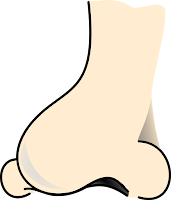Scratch-N-Sniff COVID-19 Test?
One study showed that two-thirds of people who have not yet admitted to a hospital for treatment but have tested positive for the virus self-reported that they lost their sense of smell. Another study is a "meta-analysis" that aggregates the results of many studies of the same thing—the proportion of people testing positive for COVID-19 who also have anosmia.
About three-quarters of people who are positive for the virus also fail the smell-test. Only about half of the people who are positive self-report loss of smell, which is why the smell-tests are better. So anosmia it's not a universal symptom but it's a very common one.
Is there a scientific way of measuring whether people have lost their sense of smell? It turns out that there is a gold-standard test called the NIH Toolbox Odor Identification Test, but large-scale screening would require a very cheap and easy-to-produce test, something like a scratch-n-sniff card.
One group of researchers produced such a test (though technically it's lift-and-sniff rather than scratch-and-sniff). It involves identifying the presence and intensity of a flowery smell. Their results (awaiting review) show its accuracy compares favorably to the gold-standard test. So cheaper tests can work.
What if we put such a test to use screening people for COVID-19? Another group of researchers have posted a study (awaiting review) that uses a mathematical model to test the hypothetical impact of smell-testing on the reproduction number of an outbreak, essentially a measure of how many new cases result from infection by an existing case.
The results are a little complex because there are quite a few factors to consider in the model, like how many people are likely to show the symptom, and how often they are smell-tested. But they found that if 75% of infected people have the symptom and they are tested every day, the reproduction number is reduced by more than half, enough to bring outbreaks under control. Even if people are only tested every three days, the smell-test controls outbreaks as well as weekly PCR tests.
Furthermore, the authors estimate that scratch-and-sniff tests are ten to 100 times cheaper than PCR or antigen tests we use now. Furthermore, they can be scaled to test large numbers of people because scratch-and-sniff cards can be mass produced on industrial printers. They could be part of an app-based screening system that could help guide public health decisions.
Other scientists (see end of this article) note that smell-tests suffer the same problems as other tests, like people not doing them properly or not doing them on a designated schedule. Still, it could be the best option we have to implement screening at scale in an affordable way.
Image by OpenClipart-Vectors from Pixabay



